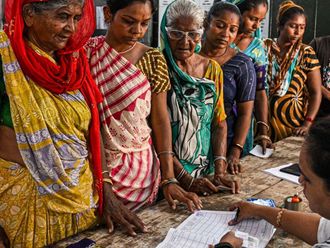I know a well-off black American who travels a lot. He rents apartments through Airbnb. But often the deal falls through after the flat’s owner sees his photograph. Many people won’t rent to black people.
This man is many social classes removed from last month’s rioters in Baltimore, or the more than 1,000 would-be migrants to Europe who drowned when their boats sank in the Mediterranean in April. However, they all experience structural racism — the system of inequality that benefits whites.
Structural racism mostly goes unnoticed in an era when only verbal racism tends to get punished.
Events in Baltimore, in the Med and on Airbnb raise the question: When and how does the majority decide to act on structural racism?
For minorities, structural racism is everyday. A non-white person in a western country typically attends an inferior school, gets hassled by police, suffers job discrimination, and dies poor.
But white people hardly ever see structural racism. Its victims generally inhabit invisible zones: ghettos, migrant detention centres and, especially in the US, prisons.
Anyway, structural racism suits the majority. In the past, poor non-white males were needed to perform boring physical labour. Today, with white women working in offices, poor non-white females are needed as a carer-cleaner class. Some non-whites inevitably get good jobs, but the majority would rather keep those for itself.
Great pretense of Western idealogy
Instead of worrying about structural racism, the white majority worries chiefly that minorities have become spoiled — that they are living like kings thanks to state benefits, open borders, affirmative action and white guilt that lets a “community organiser” such as Barack Obama get a job above his station.
And so structural racism thrives. But what’s taboo now is verbal racism. Western ideology today demands that we all pretend to treat everyone equally. Consequently, anyone saying anything overtly racist gets punished (unless it’s about the Roma in Europe).
Take the case of Justine Sacco, described in Jon Ronson’s recent book So You’ve Been Publicly Shamed. Sacco was a PR executive in New York until she tweeted just before flying to Cape Town: “Going to Africa. Hope I don’t get Aids. Just kidding. I’m white!”
Half of Twitter mocked her as racist. By the time Sacco’s plane landed, her career was over. In fact, her tasteless tweet was pretty accurate: HIV prevalence among South African whites is 0.3 per cent, compared with 13.6 per cent for blacks, according to the country’s Human Sciences Research Council.
That didn’t help Sacco. She was fed into a modern ritual: the human sacrifice of anyone who breaks anti-racist speech codes. The ritual allows the persecutors to say: “We’re not racist!”
That’s why France’s Front National suspended its founder Jean-Marie Le Pen for racist remarks. This ritual doesn’t stop structural racism, and it isn’t meant to.
Only one kind of event sometimes changes structural racism: televised death or violence. Ugly images push the majority to act.
Martin Luther King grasped this first. His marches for black voting rights in 1965, early in the TV age, seemed designed to create televised violence: state troopers beating peaceful demonstrators.
The pre-announced marching routes allowed unwieldy TV cameras to be present. Immediately after the televised violence, President Lyndon Johnson presented the Voting Rights Bill to Congress.
The same mechanism operates today. Televised terrorism in Paris in January sparked a French debate on domestic apartheid. No matter that the terrorists were entirely atypical: of several million French Muslims, almost none commit terrorism. Then, after the migrant boats sank, European leaders changed policy to try to stop more boats sinking. No matter that the boats are atypical too: fewer than one in 100 migrants arriving since 1990 in Spain, the European country nearest Africa, came through “irregular boat migration”, writes Ruben Andersson in Illegality, Inc. Televised death prompts action to stop televised death.
In the US, televised black riots traditionally prompt brief debate about structural racism. Traditionally, as President Obama has noted, nothing ensues.
The smartphone phenomenon
What has changed in the US in recent months is that a new kind of violence is getting televised: police violence. This used to be almost invisible. On local TV news, civilians committed the violence, and cops played the heroes.
Police still try to control which violence gets televised. During the riots in Ferguson and in Baltimore, police arrested photojournalists. The thinking was, how dare they film our violence?
But now smartphones rather than TV cameras tell the national story. Freddie Gray’s brutal arrest in Baltimore was nothing new; the novelty was that it was filmed on smartphones, and televised.
One man who filmed it was duly arrested at gunpoint but smartphone videos are hard to control.
The technological shift will change policy, at least a bit. The one area where Obama has risked being a “black president” is justice. He has wound down the “war on drugs”, and now campaigns against police violence. His administration is helping police departments buy body cameras, to record police dealings with citizens.
American police violence will now probably start to decline. After all, we Europeans manage to maintain structural racism without needing much police killing.
But structural racism will diminish only when we figure out how to capture it on smartphone videos.
— Financial Times









